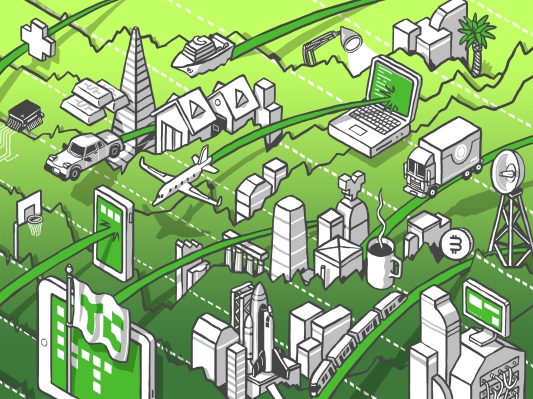Business
Nubank’s IPO filing gives us a peek into neobank economics

As the neobanking boom has matured into a collection of large digital banks, we’re slowly getting a better picture of the economics of such business efforts. Chime was early in telling the market that it was EBTIDA positive, for example, unlike less profitable European neobanks.
The upcoming Nubank IPO — technically the public offering of Nu, but we’ll just say Nubank for simplicity — provides us with far more information and detail regarding the operations of a neobank at scale, thanks to its newly public filing.
The Exchange explores startups, markets and money.
Read it every morning on TechCrunch+ or get The Exchange newsletter every Saturday.
In good news for its peers that may seek to go public, the numbers Nubank has shared seem to make pretty reasonable business sense.
We will have more notes in time regarding the company’s offering, its shareholders, its varying business lines and more. This morning, we’re narrowing our focus to the broad economics of neobanking and will end with an examination of Nubank’s aggregate financial health. We’ll take just a second at the end to test a few valuation marks against what we find.
Building a neobank at scale is not cheap. Leading startups and unicorns in the market niche have raised tectonic sums of capital to get to where they are today. But what did all that cash buy them? In Nubank’s case, quite a lot, it appears.
The economics of neobanking
Nubank is one of the most valuable startups in the world, with over 40 million users across Brazil, as well as Mexico and Colombia.
Neobanks, like any consumer product, can be viewed through the lenses of customer acquisition costs, customer monetization and activity, and long-term revenues. We want to know what Nubank pays to attract new users, how their product use and rates thereof translate to income and how much the fintech giant can juice users for over a longer time horizon.
Customer acquisition costs
Nubank is proud of its customer acquisition costs (CAC). The company states in its F-1 filing that its CAC was “US$5.0 per customer of which paid marketing accounted for approximately 20%” for the first three quarters of 2021. That’s lower than we anticipated, frankly.
-

 Entertainment7 days ago
Entertainment7 days agoWhat’s on the far side of the moon? Not darkness.
-

 Business6 days ago
Business6 days agoTikTok faces a ban in the US, Tesla profits drop and healthcare data leaks
-

 Business6 days ago
Business6 days agoLondon’s first defense tech hackathon brings Ukraine war closer to the city’s startups
-

 Entertainment7 days ago
Entertainment7 days agoHow to watch ‘The Idea of You’: Release date, streaming deals
-

 Entertainment6 days ago
Entertainment6 days agoMark Zuckerberg has found a new sense of style. Why?
-

 Business5 days ago
Business5 days agoHumanoid robots are learning to fall well
-

 Entertainment5 days ago
Entertainment5 days ago2024 summer TV preview: 33 TV shows to watch this summer
-

 Business4 days ago
Business4 days agoGoogle Gemini: Everything you need to know about the new generative AI platform






















